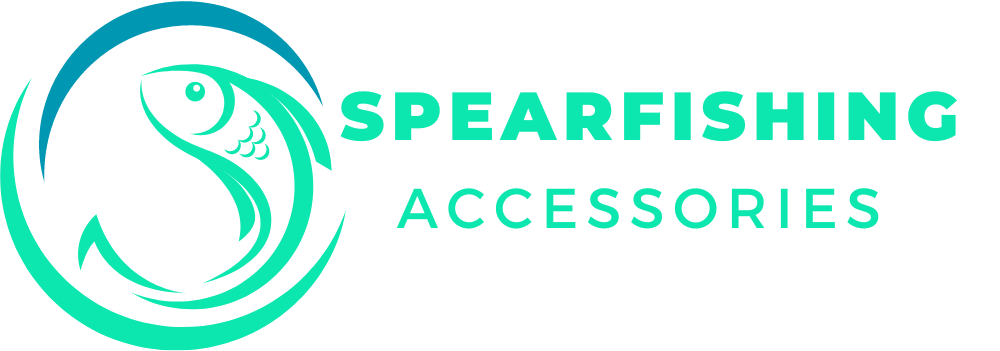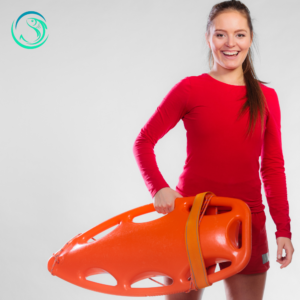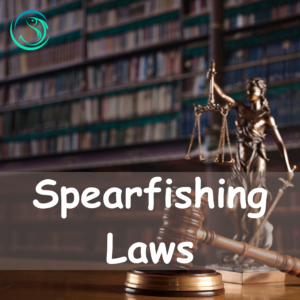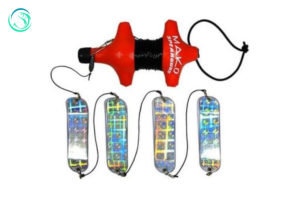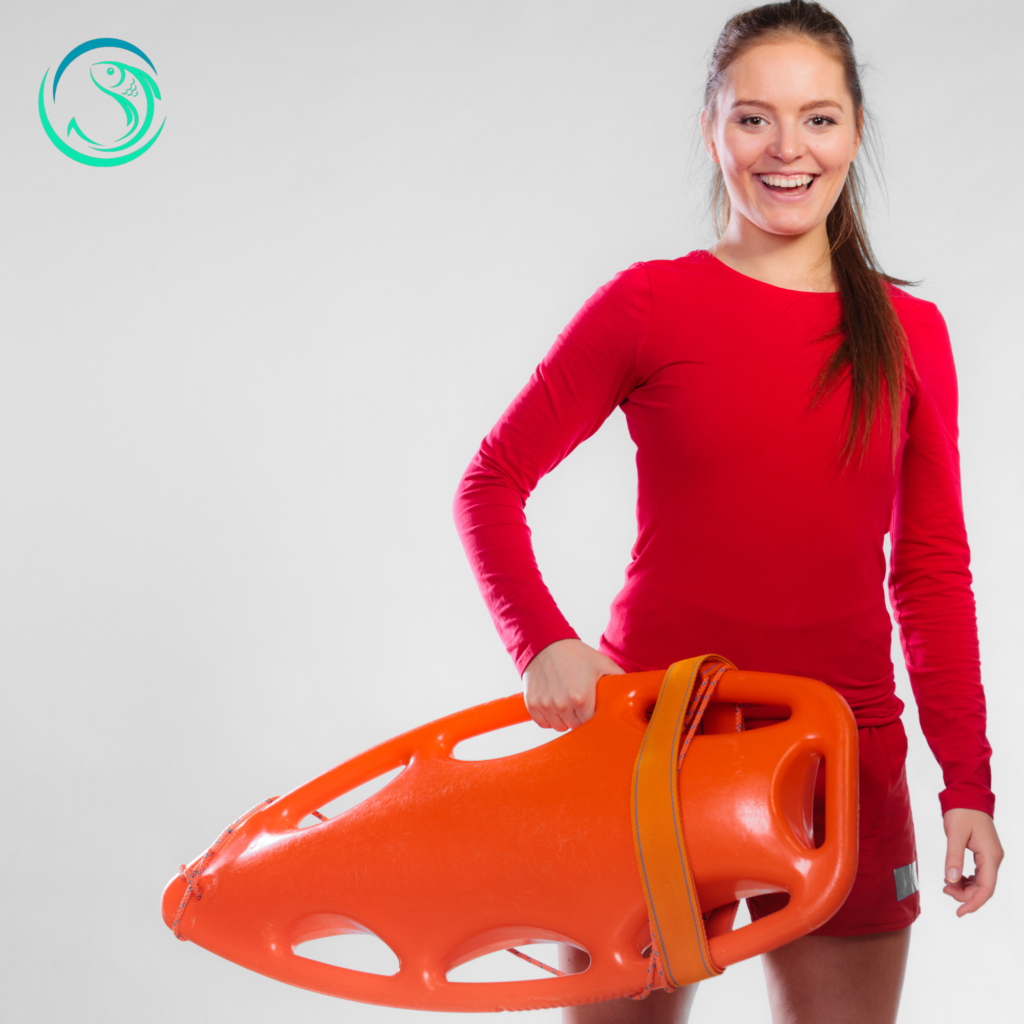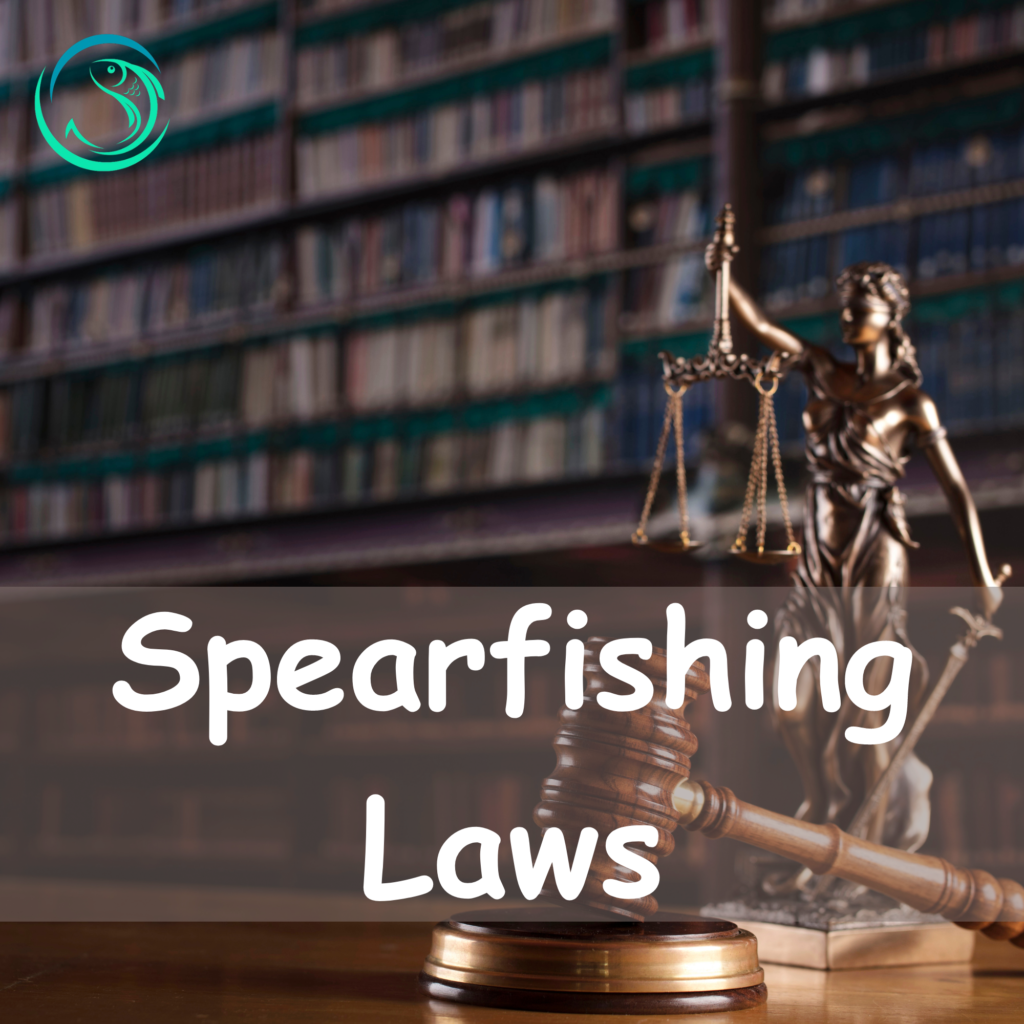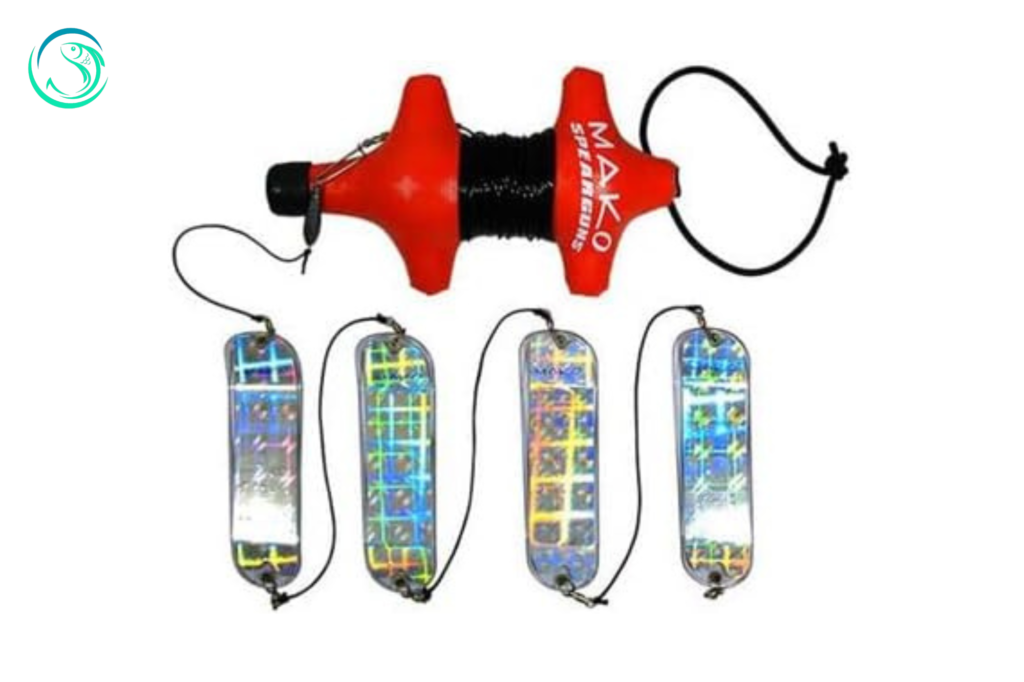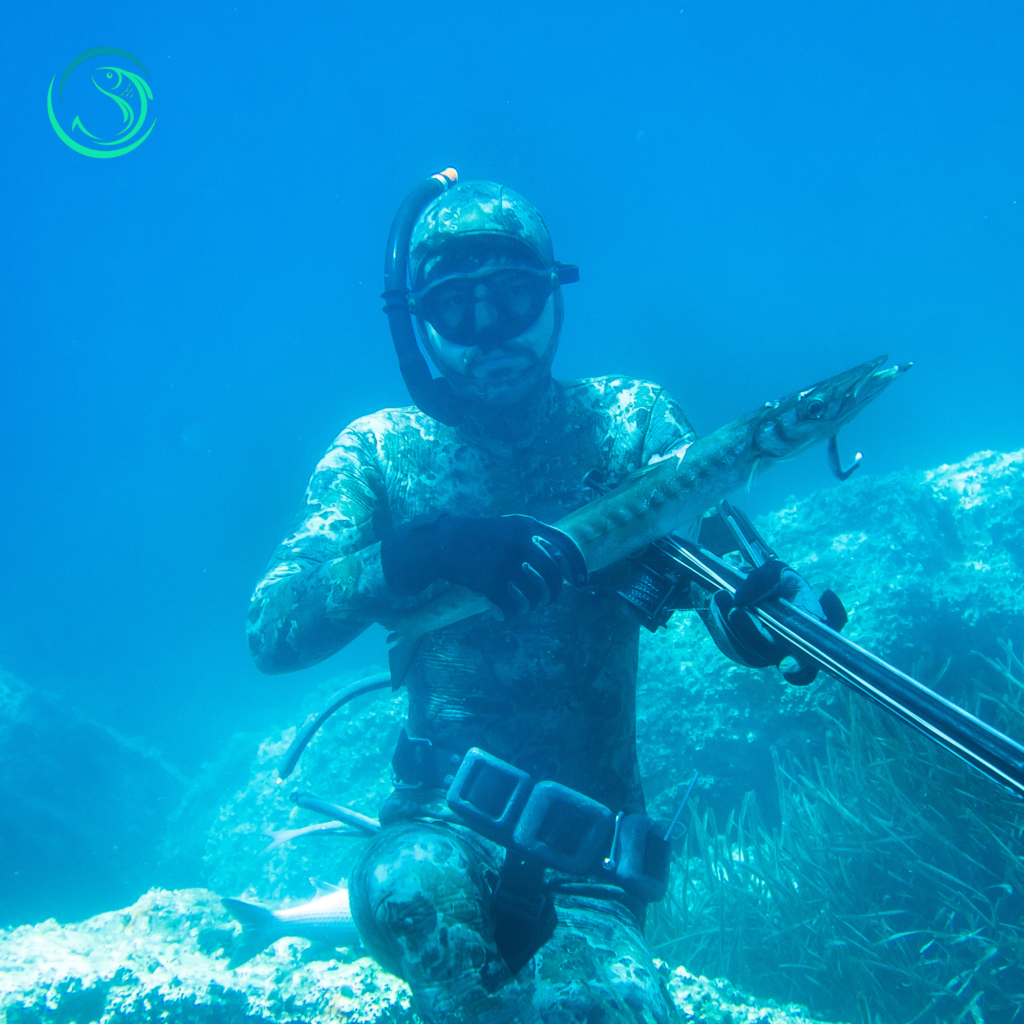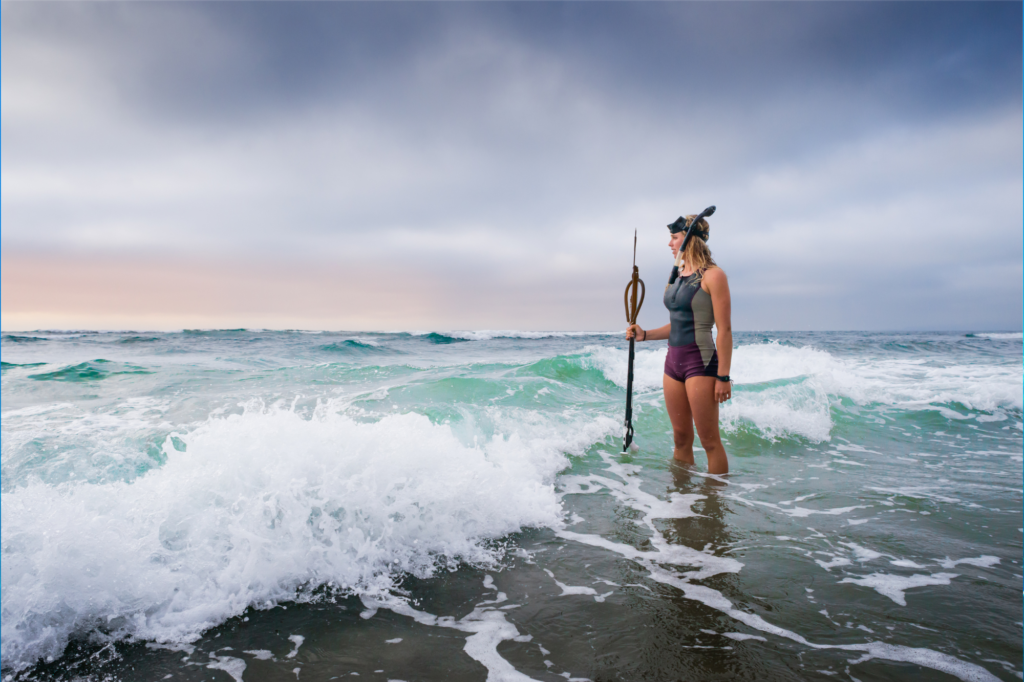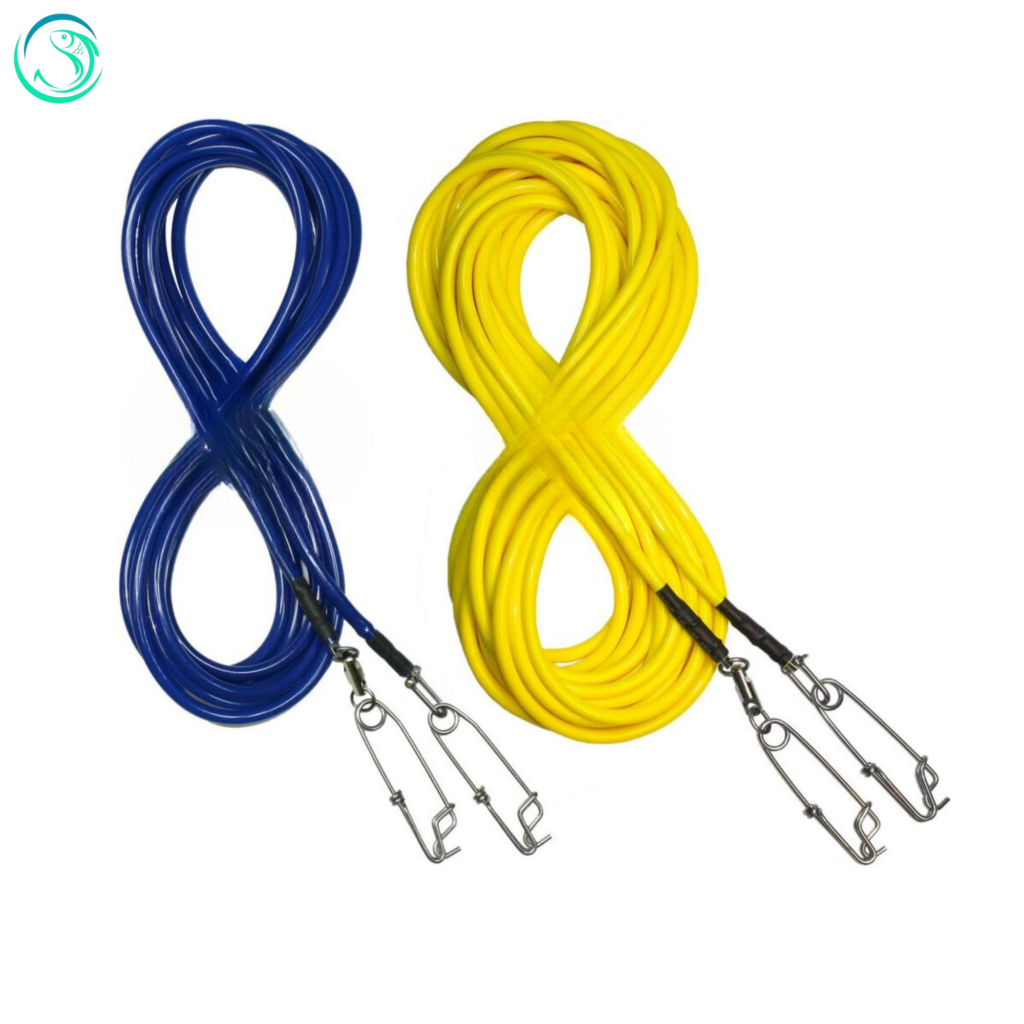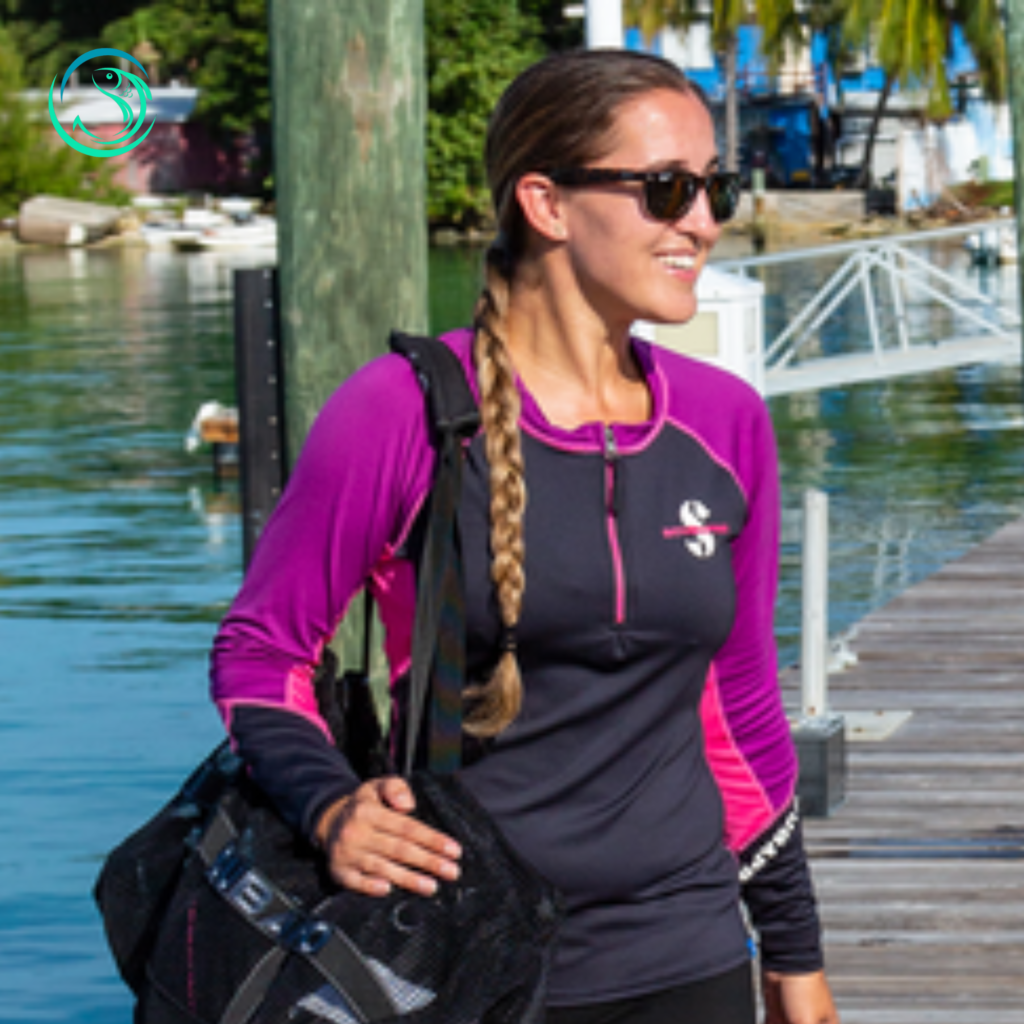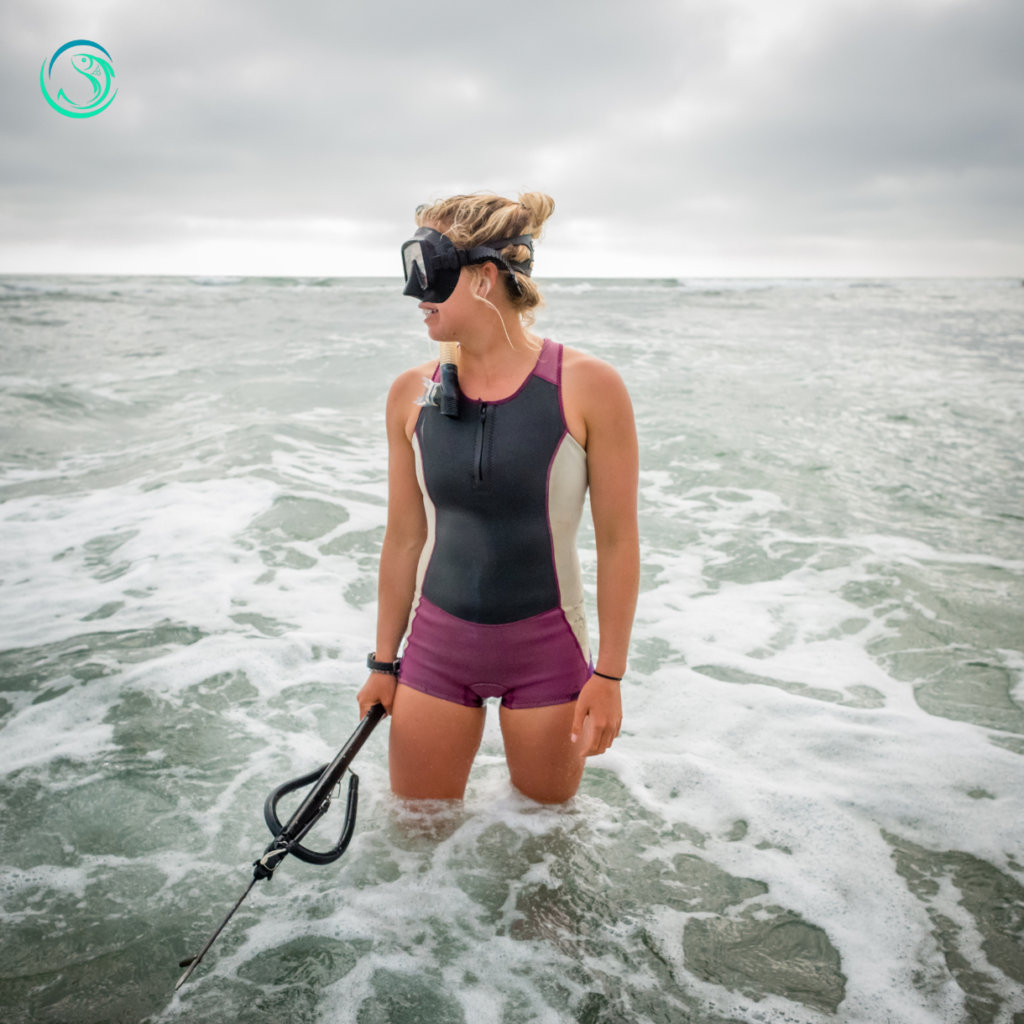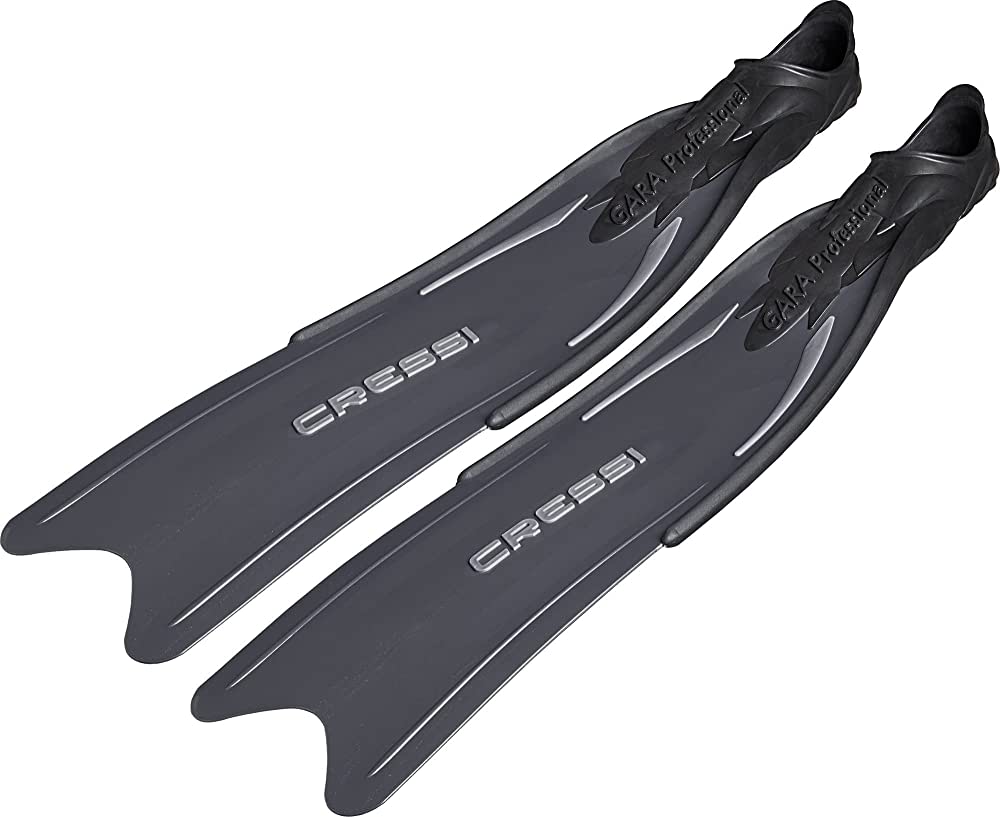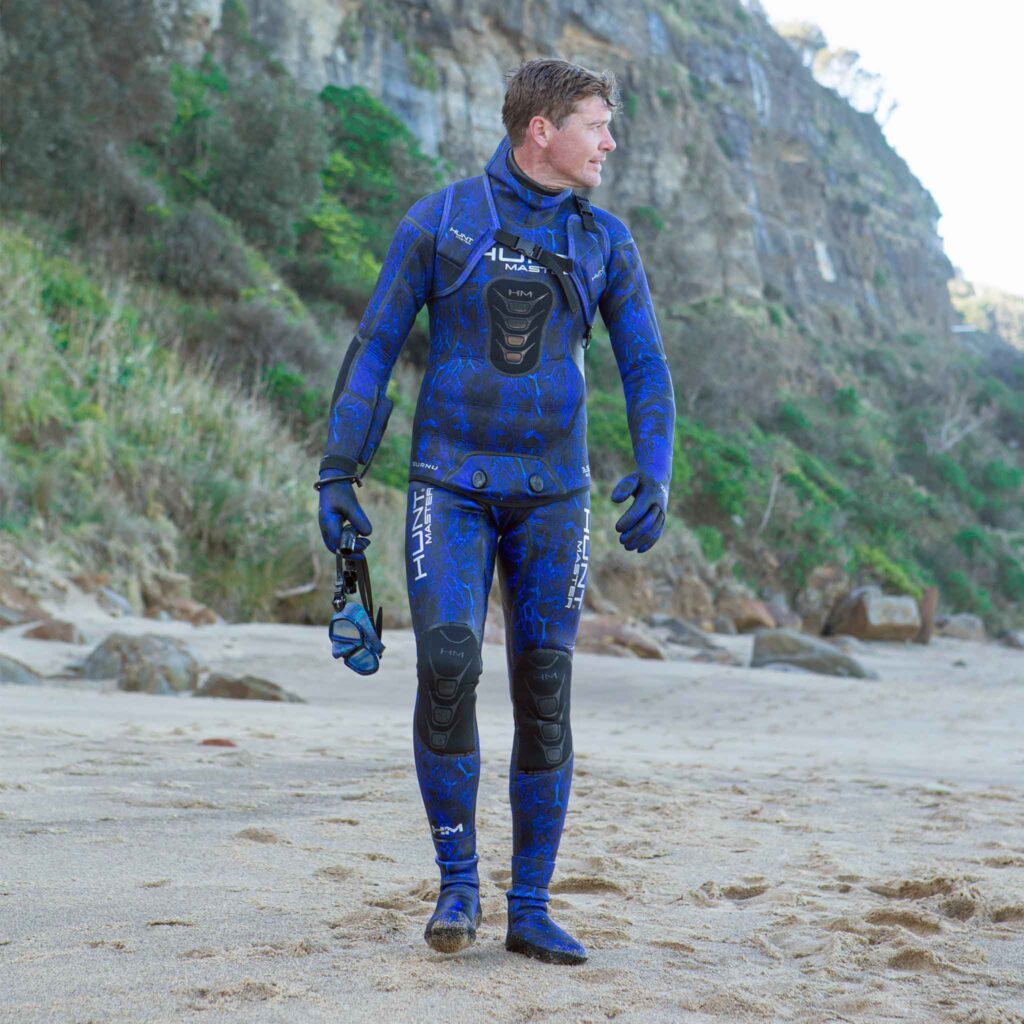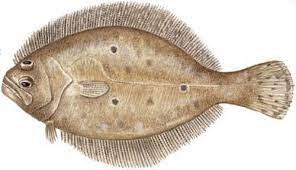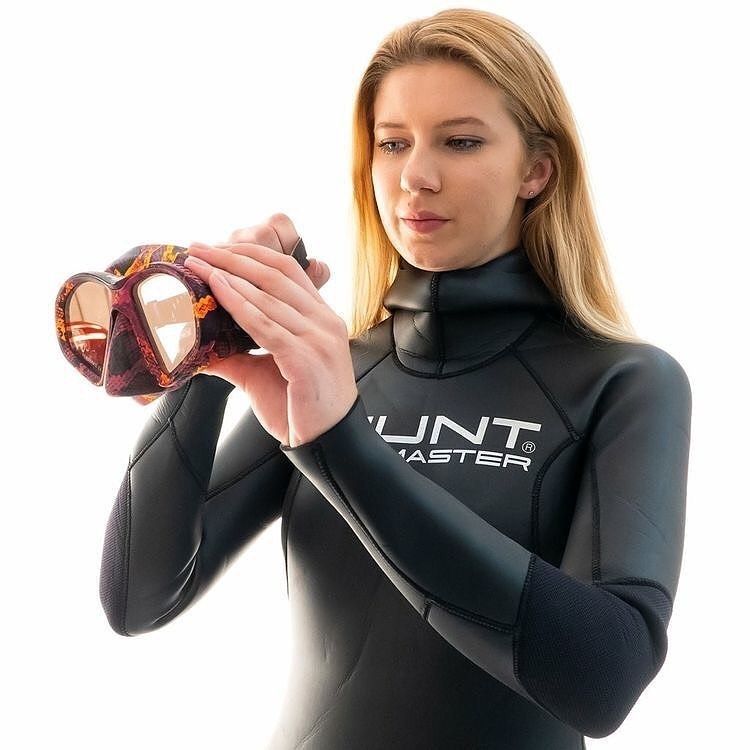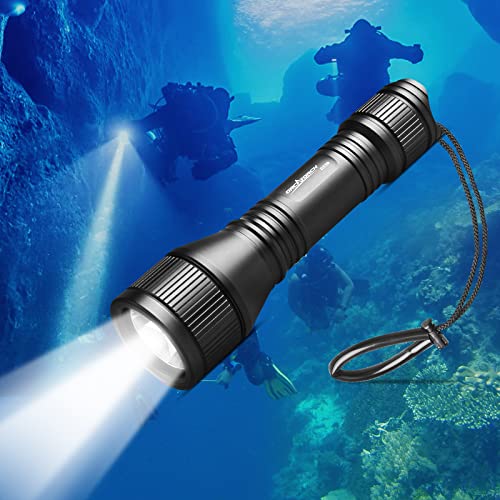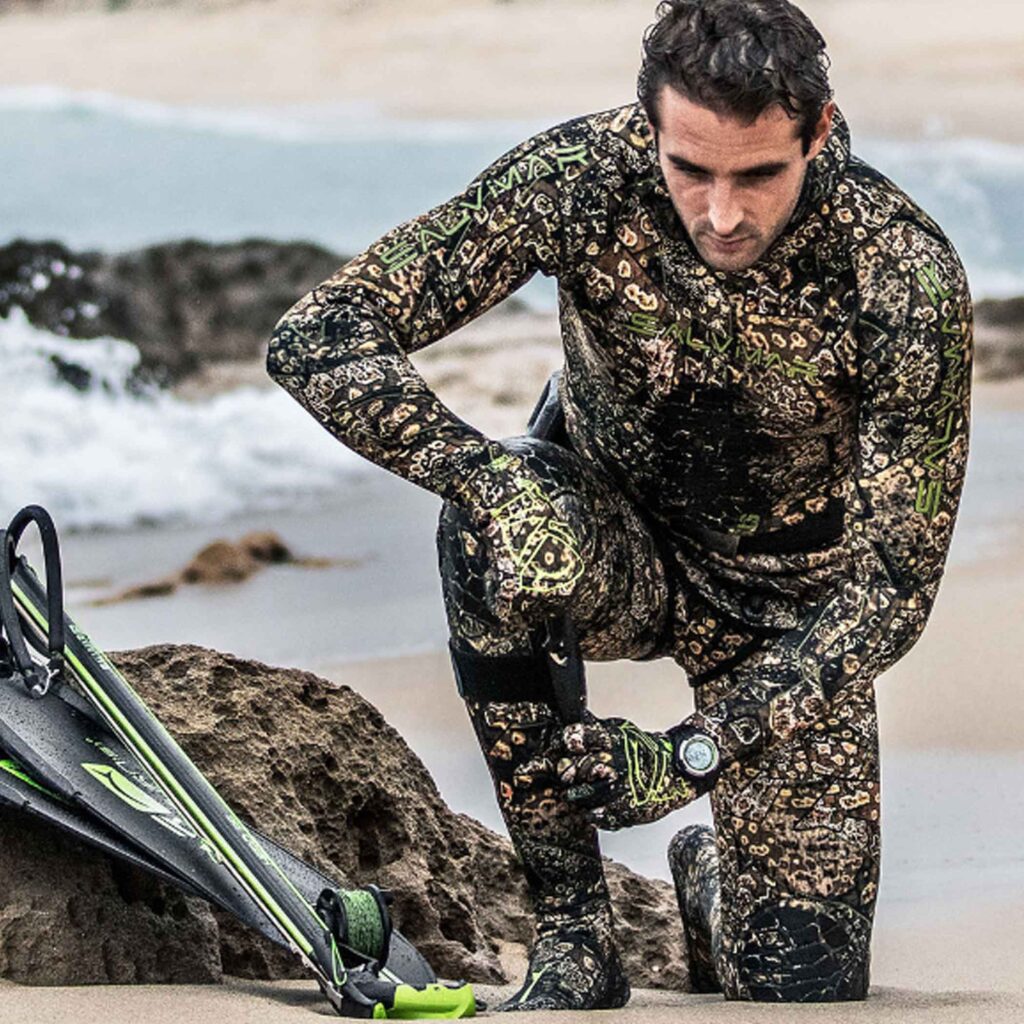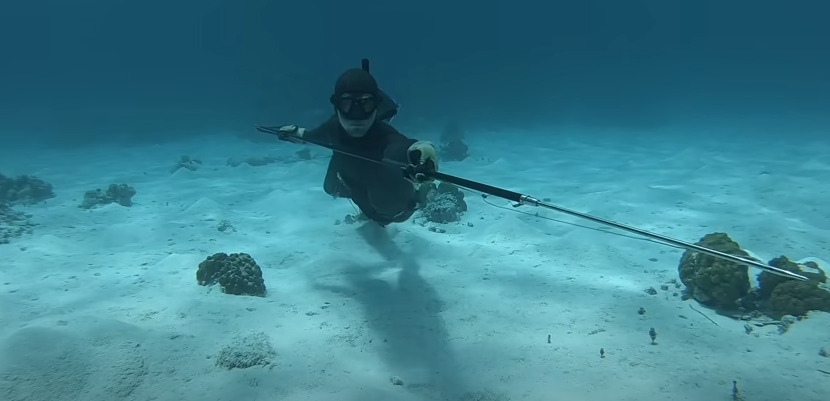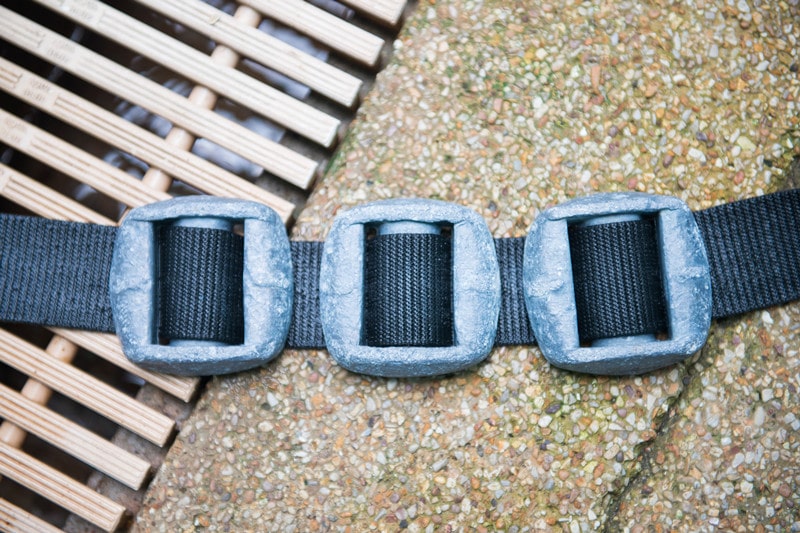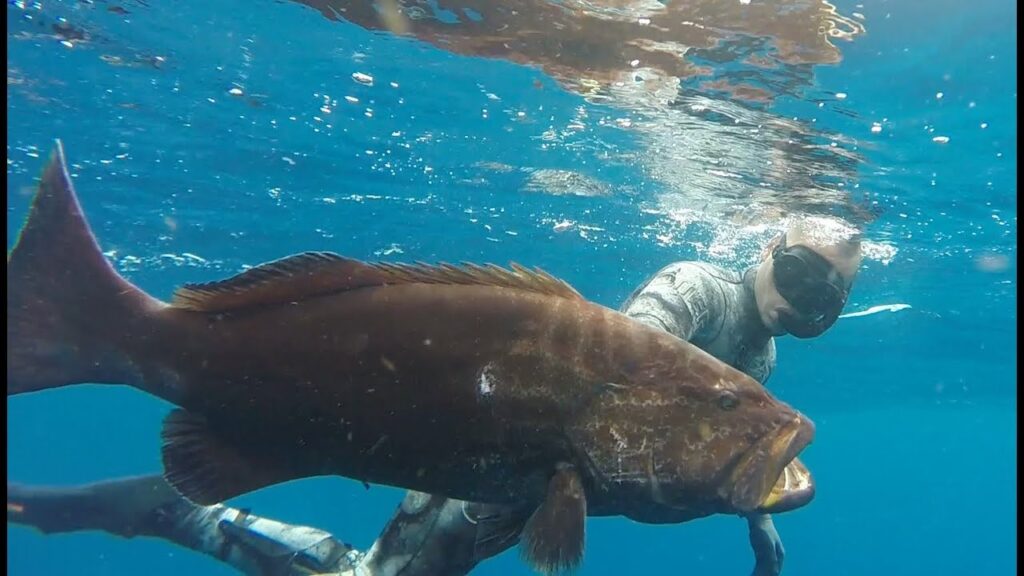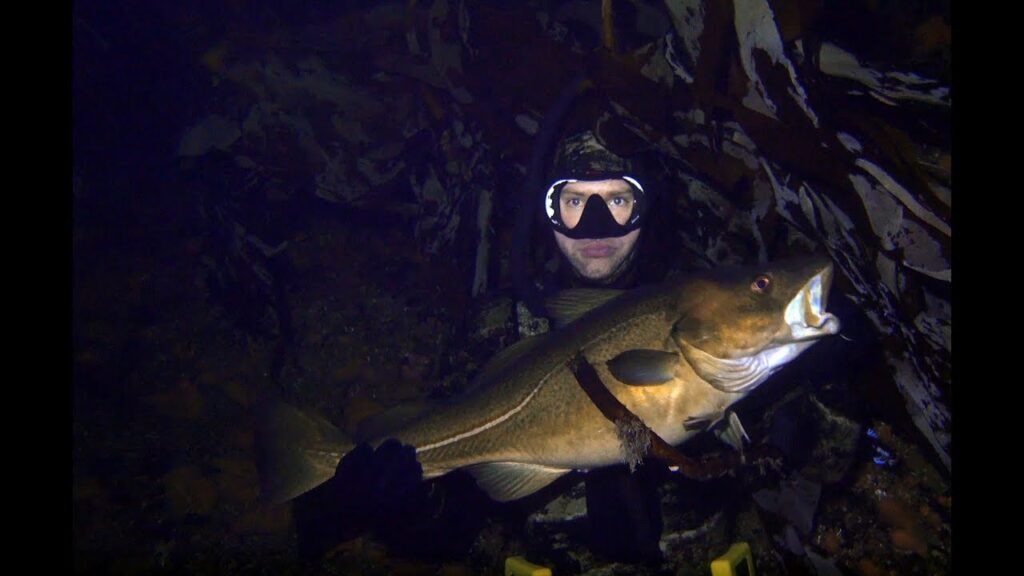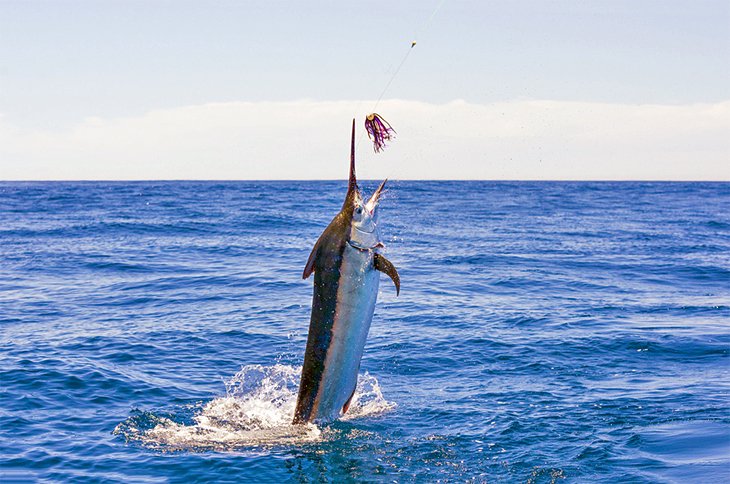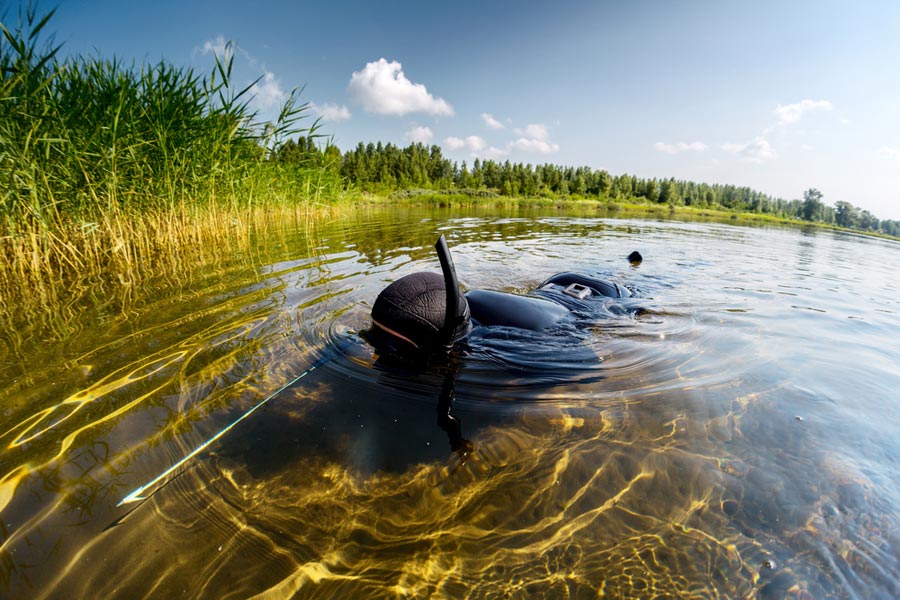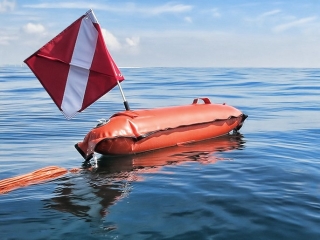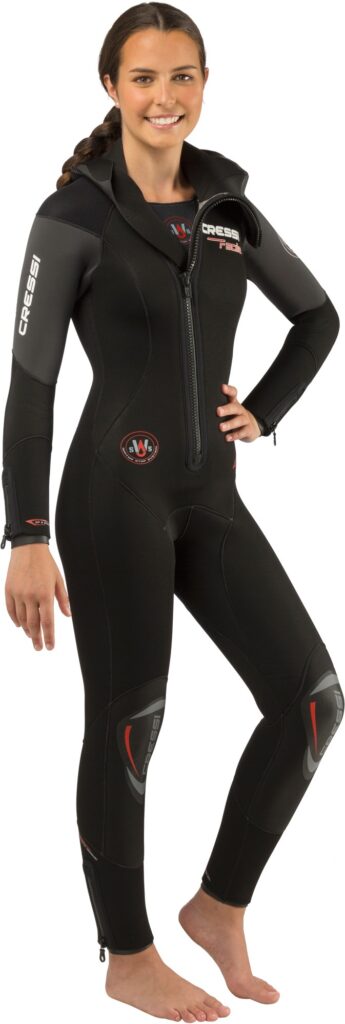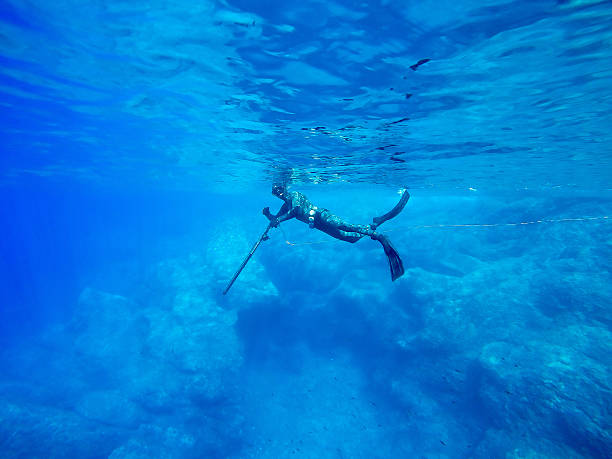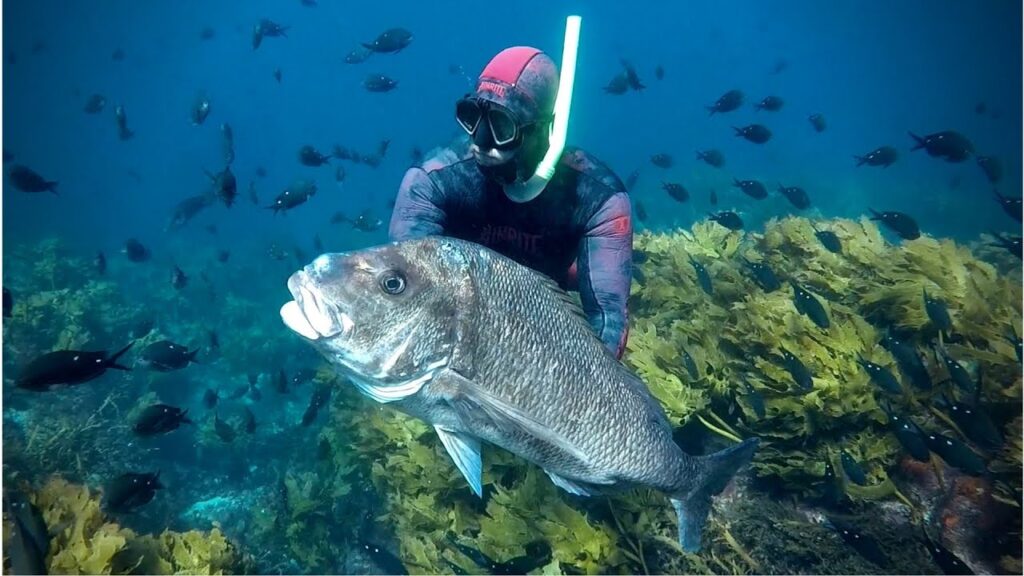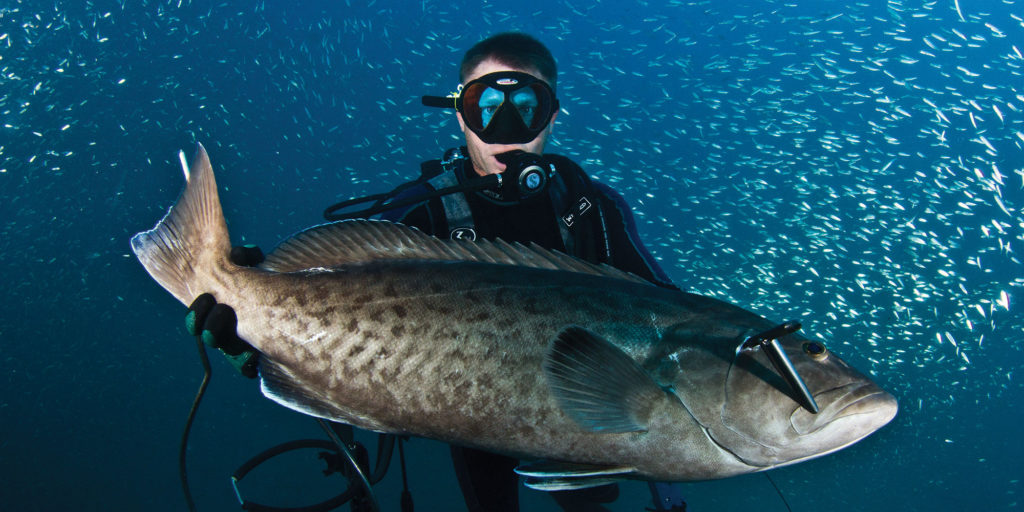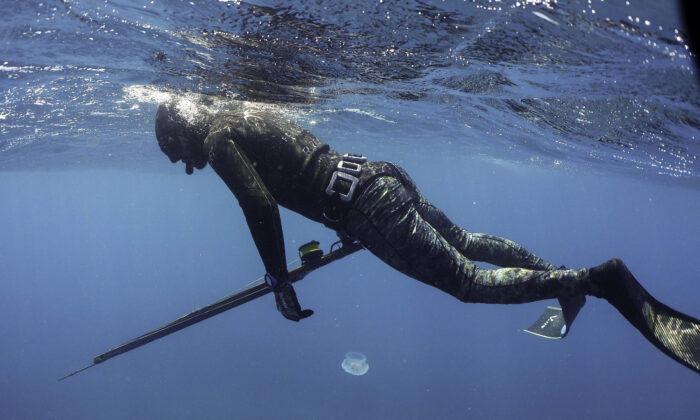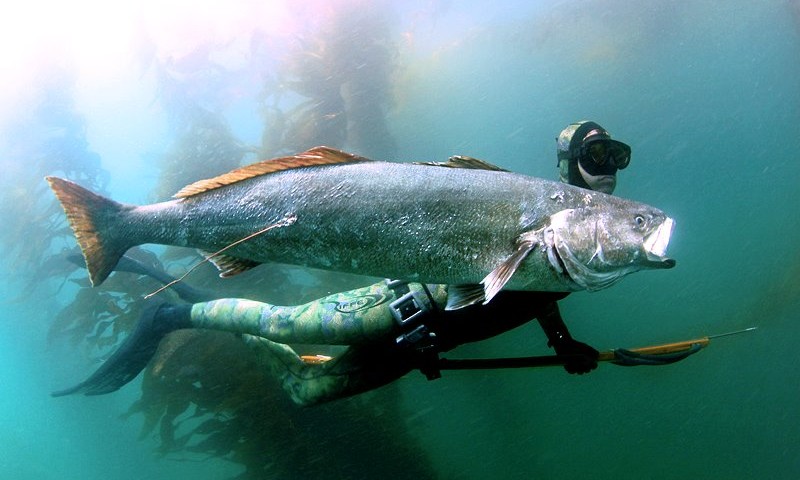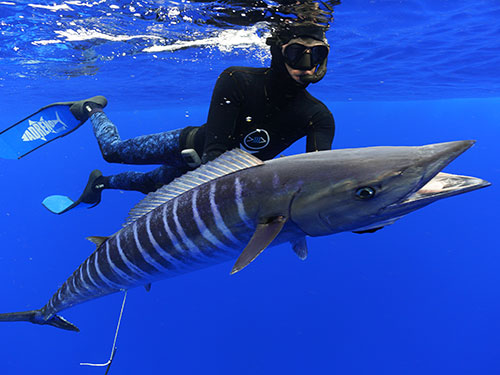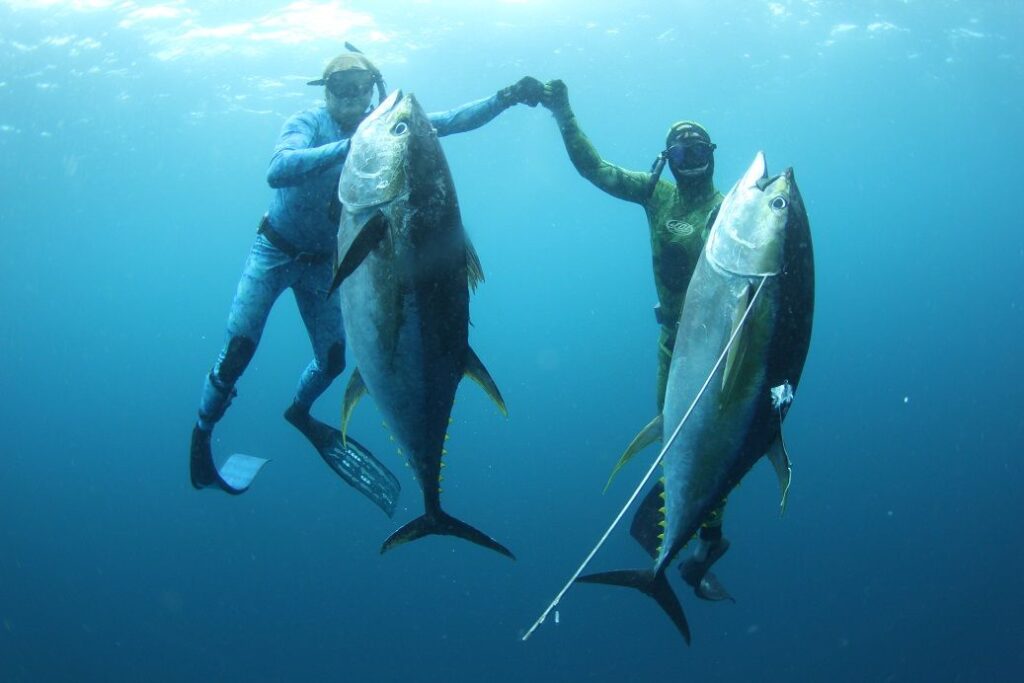Wondering how to speargun fish like a pro? Let’s dive into the exciting world of speargun fishing!
In this action-packed guide, we’ll reveal the secrets of mastering the ancient art of pole spearfishing. With its affordability and simplicity, pole spearfishing will have you feeling at one with the ocean in no time.
Discover the ins and outs of using a pole spear, from the right techniques and gear to safety tips and tricks.
Suitable for beginners and seasoned fishermen alike, this guide has everything you need to embark on your underwater adventure.
So grab your gear, and let’s plunge into the thrilling realm of speargun fishing with a pole spear!
Imagine scuba diving among schools of fish, marveling at their beauty and grace. What if you could catch those fish with your own hands?
That’s the magic of pole spearfishing!
Keep reading to unlock the mysteries of this exhilarating activity, and soon you’ll be an expert in hunting fish with a pole spear.
Understanding Pole Spears
First things first, let’s define what a pole spear is. A pole spear is a type of speargun that consists of a long pole with a pointed tip on the end, called a spearhead.
Unlike other types of spearguns, a pole spear doesn’t have a trigger mechanism or bands to power the shot.
Instead, the user must manually thrust the pole forward to impale the fish.
Different Types of Pole Spears and Their Features
There are a few different types of pole spears, each with its own unique features.
Here are some of the most common types you’ll come across:
- One-piece Pole Spear: As the name suggests, this type of pole spear is made from a single piece of material, usually fiberglass or carbon fiber. It’s lightweight and easy to handle, making it a good choice for beginners.
- Three-piece Pole Spear: This type of pole spear breaks down into three pieces, making it easier to transport. It’s also usually more durable than a one-piece pole spear.
- Hawaiian Sling: This is a type of pole spear that has a loop of rubber tubing attached to the spearhead. The user pulls the tubing back and hooks it onto a notch on the pole to load the spear, then releases it to shoot the fish.
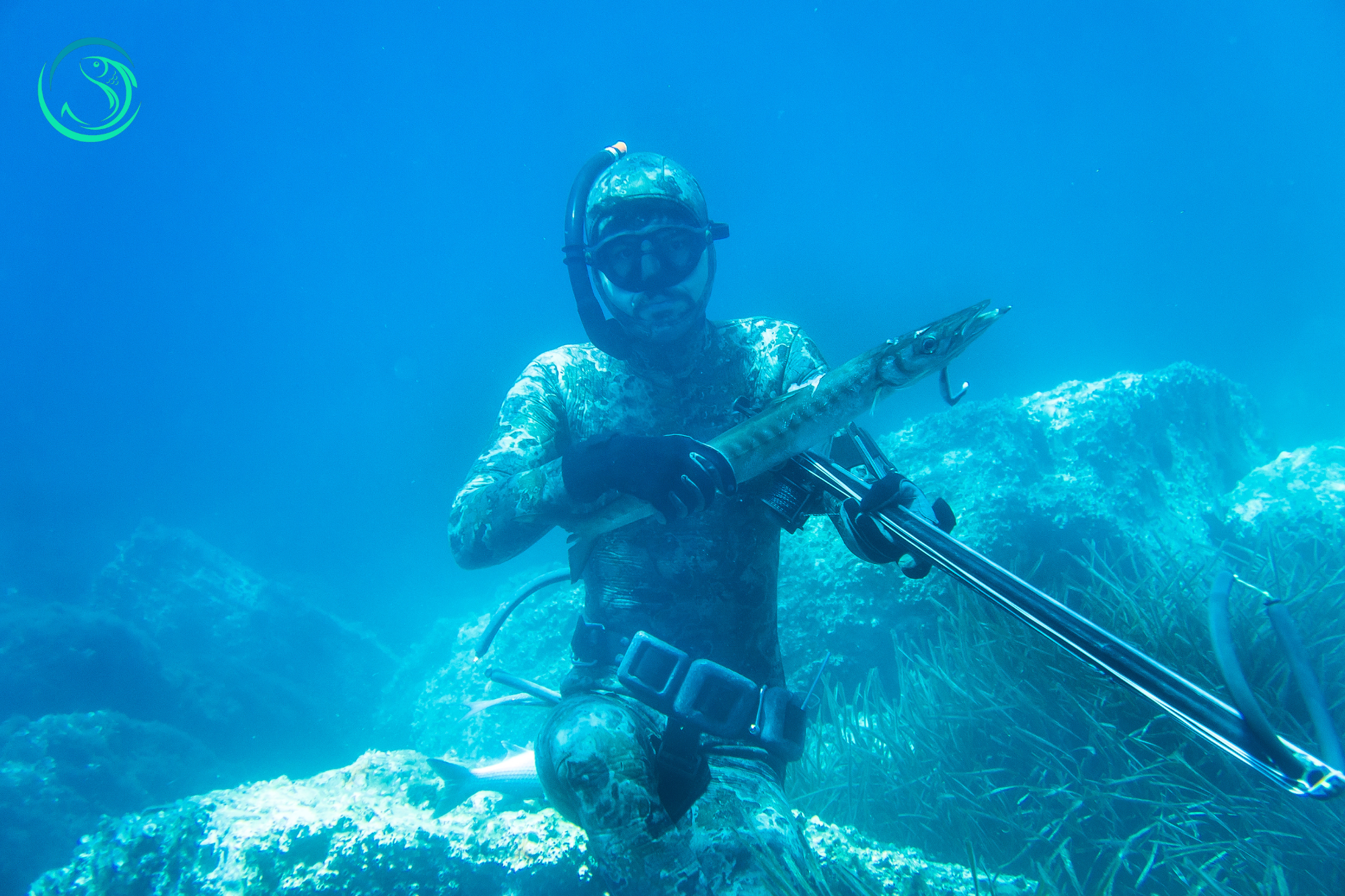
Advantages and Disadvantages of Using Pole Spears Compared to Other Spearguns
Now that you know what a pole spear is and the different types available, let’s talk about some of the advantages and disadvantages of using one.
Advantages:
- A pole spear is typically more affordable than other types of spearguns.
- It’s also lightweight and easy to handle, making it a good choice for beginners.
- There’s no trigger mechanism or bands to power the shot, so it’s a quieter way to hunt fish.
Disadvantages:
- A pole spear requires the user to get close to the fish to make a successful shot, which can be difficult in murky water or with skittish fish.
- It also requires more physical effort to use than other types of spearguns, since the user has to manually thrust the pole forward.
Spearfishing Gear
To be successful in spearfishing, it’s important to have the right scuba gear. Here are some of the essential items you’ll need:
- Pole Spear: Of course, you’ll need a pole spear to hunt fish! Choose one that fits your skill level and the type of fish you’ll be hunting.
- Wetsuit: A spearfishing wetsuit will keep you warm and protected while you’re in the water. Choose one that fits snugly but isn’t too tight.
- Fins: Fins will help you swim faster and more efficiently in the water.
- Mask and Snorkel: A mask will help you see underwater, and a snorkel will allow you to breathe while you’re swimming on the surface.
- Weight Belt: A weight belt will help you stay underwater and make it easier to dive deeper.
- Float Line: A float line is an essential safety item for any diver. It connects you to a floating device on the surface, which makes it easier for other divers or boats to see you.
- Dive Knife: A dive knife is an essential tool for any diver. It can be used to cut through fishing lines or to free yourself from any entanglements.
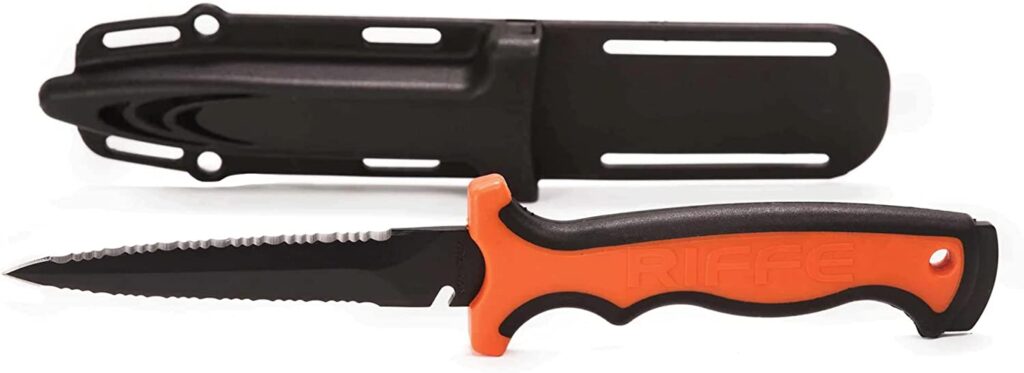
Now that you understand what a pole spear is, the different types available, and the advantages and disadvantages of using one, you’re ready to get out there and start hunting fish!
Remember to always practice safe diving and fishing techniques, and have fun!
Essential Equipment for Pole Spear Fishing
Pole spear fishing is a thrilling adventure that requires the right gear to make your experience both enjoyable and safe.
So, let’s discuss the essential equipment you need to have before you dive into the underwater world of spearfishing.
Importance of Choosing the Right Gear
When it comes to pole spear fishing, having the right gear is crucial.
Your gear can make the difference between a successful and enjoyable dive or a disappointing and dangerous one.
Here are some tips for choosing the right gear:
- Quality: Choose gear that is made of high-quality materials and is well-constructed. This ensures that your gear will last longer and perform better.
- Fit: Make sure that your gear fits properly. Ill-fitting gear can cause discomfort or even lead to accidents.
- Research: Do your research before purchasing any gear. Read reviews and ask for recommendations from experienced divers.
Tips for Maintaining and Caring for Your Equipment
Proper maintenance and care of your equipment will help extend its life and ensure that it performs well.
Here are some tips for maintaining and caring for your gear:
- Rinse your gear with fresh water after every dive.
- Store your gear in a dry, cool place out of direct sunlight.
- Check your gear regularly for any signs of wear or damage and replace it as necessary.
Shallow Water Blackout
As a diver, it’s important to be aware of the risks associated with underwater diving. Shallow water spearfishing blackout is a serious condition that can occur when a diver hyperventilates before diving, causing them to lose consciousness underwater.
It’s essential to be aware of the signs of blackout and to take the necessary precautions to prevent it from happening.
Remember to always dive with a partner, take frequent breaks, and never push yourself beyond your limits.
The right equipment is crucial for a successful and safe dive. Taking care of your gear and being aware of the risks associated with diving will help ensure that your dive is enjoyable and that you return safely to the surface.
So gear up and dive in, the underwater world of spearfishing awaits!
Techniques for Using a Pole Spear
Pole spear fishing is a thrilling and challenging activity that requires patience, skill, and the right techniques.
Whether you are a beginner or an experienced angler, there are a few key tips and strategies to keep in mind when using a pole spear.
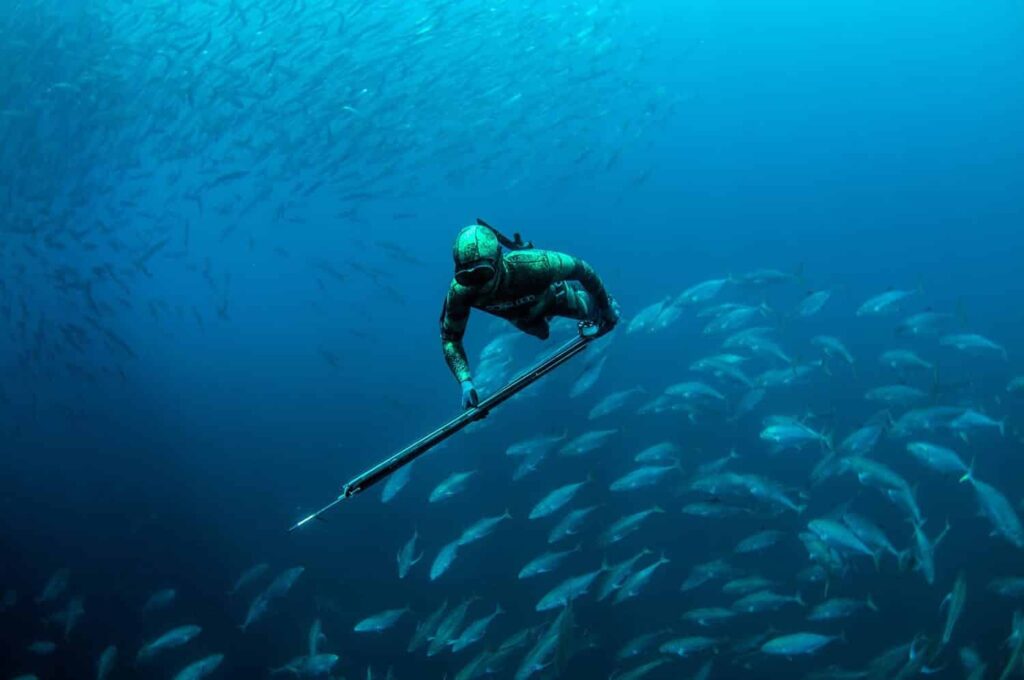
Safety Guidelines for Speargun Fishing
Before you start spearfishing, it’s essential to follow some basic safety guidelines to ensure a safe and successful experience.
First and foremost, always dive with a partner or a group, and never dive alone. This can help prevent accidents and ensure that someone is there to assist you in case of an emergency.
It’s also important to be aware of shallow water blackouts, which can occur when you hold your breath for too long while free diving.
To avoid this, always take deep breaths before diving and make sure to come up for air before you feel out of breath.
Step-by-Step Guide for Using a Pole Spear
Using a pole spear requires a bit of practice and technique, but it’s a simple and effective way to hunt fish in the open ocean.
The first step is to choose the right spear tip for the type of fish you are hunting.
Different types of spear tips are available, including paralyzer tips and trident tips, each with their unique features and benefits.
Once you’ve chosen your spear tip, it’s time to start diving. You can either shore dive or free dive, depending on your preference and location.
When you spot a fish, approach it slowly and calmly, and take aim with your pole spear.
Aim for the fish’s head or spine, which are the most effective places to immobilize it.
Tips for Improving Your Aim and Accuracy
To improve your aim and accuracy when using a pole spear, it’s important to practice regularly and develop good technique.
One key tip is to keep your eyes focused on the target and your body still and steady.
Remember to exhale slowly and steadily as you take your shot to avoid any sudden movements that could cause you to miss your target fish.
Strategies for Hunting Different Types of Fish
Different types of fish require different strategies and techniques when hunting with a pole spear.
For example, larger fish may require a stronger and more robust spear tip, while small reef fish may be easier to catch with a smaller and more delicate tip.
It’s also important to be aware of the specific habitats and behaviors of the fish you are hunting, as this can help you determine the best approach and strategy for catching them.
So, using a pole spear for speargun fishing is a thrilling and rewarding activity that requires the right techniques, equipment, and strategies.
By following these tips and guidelines, you can develop the skills and confidence to enjoy the exciting world of pole spear fishing and become a successful hunter in the open ocean.
Advanced Pole Spear Fishing Techniques
Once you have mastered the basics of pole spear fishing, you may want to try more advanced techniques for hunting larger fish and exploring deeper waters.
Here are some tips and strategies to take your spearfishing skills to the next level:
Hunting Larger Fish
Hunting larger fish requires more skill and patience. Here are some tips to help you catch that big one:
- Use a longer spear tip: A longer spear tip can help you penetrate the fish’s thick skin or scales.
- Aim for the head: Aiming for the fish’s head will ensure a quicker and more humane kill.
- Stay calm: When hunting larger fish, it’s important to remain calm and patient. Wait for the right moment to strike.
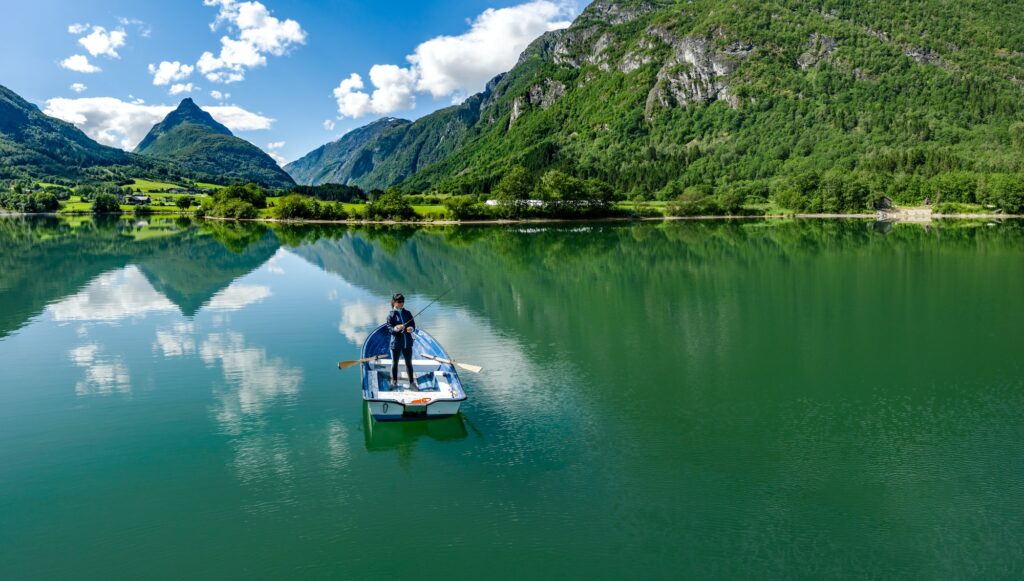
Hunting in Deeper Waters
Diving deeper can be challenging and requires more skill and experience.
Here are some tips to help you hunt in deeper waters:
- Use a float line: A float line will help you keep track of your spear and provide a visual marker for your dive partner.
- Use a dive knife: A dive knife can help you cut yourself free if you get tangled in seaweed or fishing line.
- Know your limits: Diving deeper can be dangerous, and it’s important to know your limits and not push yourself too far.
Hunting Elusive and Fast-Moving Fish
Some fish are faster and more elusive than others, making them more challenging to catch.
Here are some strategies to help you hunt these fish:
- Use a camouflage wetsuit: A camouflage wetsuit can help you blend in with your surroundings and make it harder for fish to spot you.
- Swim slowly and quietly: Moving slowly and quietly will help you avoid scaring off fish.
- Be patient: Hunting elusive fish can take time, so be patient and persistent.
By following these tips and techniques, you can become a more skilled and successful pole spear fisherman. Remember to always put safety first, use the right spearfishing equipment, and respect the ocean and its inhabitants.
So, are you ready to take on the challenge of advanced pole spear fishing techniques?
What kind of fish are you hoping to catch on your next dive?
Pole Spear Fishing Etiquette
Do you know the importance of fishing with responsibility and ethics?
As a speargun fisherman, it’s essential to follow some basic guidelines and tips to ensure that you are practicing sustainable and ethical fishing.
Here are some things to keep in mind while you are out in the water with your pole spear.
Ethical and Sustainable Fishing Practices
First, always make sure to have the necessary fishing license before heading out for a speargun fishing adventure.
Fishing licenses are required by law and are a way to ensure that the fish populations are protected and that fishing is being done responsibly.
Guidelines for Responsible Speargun Fishing
Next, it’s crucial to know the size and species of fish that are allowed to be caught in your area.
This information can be found in the local fishing regulations, and it’s your responsibility to follow these guidelines to avoid overfishing and depletion of fish populations.
It’s also important to be mindful of the environment when fishing.
Avoid fishing in areas that are designated as protected or conservation areas, and always respect the natural habitat of the fish.
Tips for Minimizing Your Impact on the Environment
When using a pole spear, be mindful of the number of fish that you catch. Only take what you need, and avoid catching fish that are too small or not suitable for consumption.
Additionally, it’s important to minimize your impact on the environment by properly disposing of any trash or debris that you may encounter during your fishing trip.
By following these guidelines and tips, you can ensure that you are fishing with responsibility and ethics while enjoying the thrill of speargun fishing with your pole spear.
Conclusion
Congratulations! You’ve made it to the end of our guide to using a pole spear for speargun fishing.
We’ve covered a lot of ground, from the different types of pole spears available to the advanced techniques for hunting larger or faster fish.
We’ve also talked about the importance of using ethical and sustainable fishing practices and minimizing your impact on the environment.
Remember, using a pole spear is a cost-effective, eco-friendly, and exciting way to catch fish in the open ocean. With the right equipment, techniques, and respect for the ocean, you can enjoy this thrilling sport while also being a responsible angler.
So, are you ready to give it a try?
Head out to your nearest shore dive and put your newly acquired knowledge to the test!
And always remember, before you go spearfishing, be sure to obtain a fishing license and follow the regulations in your area.
Happy speargun fishing!
Here’s some more info if you want to buy one:
| Name and Brand | User Level | Pricing |
| Cressi Mohicano | Beginner | Under $100 |
| AB Biller Wood Mahogany | Beginner | Under $100 |
| JBL Carbine Speargun | Beginner | Under $100 |
| Mares Bandit Speargun | Beginner | Under $200 |
| Pathos Laser Open Pro | Intermediate | Under $500 |
| Rob Allen Sparid Evo | Intermediate | Under $500 |
| Riffe Euro 120 | Intermediate | Under $1000 |
| Salvimar Predathor | Advanced | Under $1000 |
| Omer Cayman ET Roller | Advanced | Under $1000 |
| Wong Spearguns | Advanced | Over $1000 |
FAQs
1. How do you catch fish spearfishing?
You catch fish while spearfishing by aiming and shooting them with a spear gun or a pole spear.
2. How hard is it to spear fish?
Spearfishing can be challenging, especially for beginners. It requires good swimming skills, patience, and practice.
3. Where do you shoot a fish with a speargun?
You should aim for the fish’s head or spine with a speargun to make a quick and humane kill.
4. How is spear fishing done?
Spearfishing is done by swimming underwater and hunting fish with a speargun or pole spear.
5. Is spearfishing hard to learn?
Spearfishing can be challenging to learn, but with practice and patience, anyone can improve their skills.
6. Do you have to be certified to spearfish?
No, you do not need to be certified to spearfish, but it’s important to learn about safety, ethics, and regulations before starting.
7. Can you make a living off spearfishing?
It is possible to make a living off spearfishing, but it requires experience, dedication, and hard work.
8. What do I need to start spearfishing?
To start spearfishing, you need a speargun or pole spear, fins, a mask, a wetsuit, and knowledge about safety and regulations.
9. How do you spearfish for beginners?
For beginners, it’s best to start with a pole spear and practice in shallow waters with calm conditions. It’s also important to learn about safety and regulations.
Some spearfishing tips include staying calm and patient, improving your aim and accuracy, and choosing the right equipment.
To aim when spearfishing, you should line up the shaft of the spear with your target and shoot quickly and accurately.
10. How does a spearfishing slip tip work?
A slip tip is a type of spear tip that penetrates the fish and releases from the shaft, allowing the fish to pull the shaft without tearing.
To get started in spearfishing, you should learn about safety and regulations, get the necessary equipment, and practice in shallow waters.
Before spearfishing, you should know about safety, regulations, and ethical fishing practices. You should also have the necessary equipment and skills.
11. How deep do you need to go to Spearfish?
The depth you need to go to spearfish depends on the type of fish you’re hunting. Some fish can be caught in shallow waters, while others require deeper dives.
12. How much does it cost to start spear fishing?
The cost of starting spearfishing can vary depending on the equipment you choose. A basic setup can cost a few hundred dollars, while more advanced gear can cost thousands.
13. Can you make money spear fishing?
It is possible to make money spearfishing, but it requires experience, dedication, and hard work. Many spearfishers sell their catch to local markets or restaurants.
14. What is free diving fishing?
Free diving fishing, also known as apnea or breath-hold diving, is a type of spearfishing that involves diving without the use of scuba gear.
15. How deep can free divers go?
Experienced free divers can dive to depths of over 100 meters, but most beginners should start with shallower dives.
16. Do you have to free dive to spear fish?
No, spearfishing can be done using scuba gear or free diving techniques. However, some people prefer free diving as it allows for a more natural and intimate experience with the underwater environment.
17. What is the difference between freediving and spearfishing?
Freediving is a type of diving where the diver holds their breath and dives underwater without the aid of scuba gear or other breathing equipment. Spearfishing is a type of fishing where the fisherman uses a speargun or pole spear to catch fish underwater.
18. How do you free dive spearfish?
To free dive spearfish, you will need to practice safe diving techniques, hold your breath while diving to your desired depth, and use a speargun or pole spear to catch fish.
19. Is Spearfish illegal to scuba dive?
Spearfishing using scuba gear is illegal in some areas and allowed in others. It is important to research the rules and regulations in your area before diving.
20. Why is spear fishing so difficult?
Spearfishing can be difficult due to the challenges of diving underwater and accurately aiming a speargun or pole spear. It also requires a lot of practice and patience to develop the necessary skills.
21. How do I spear fish?
To spearfish, you will need to choose the appropriate equipment for your level of experience, practice safe diving techniques, and develop your aim and accuracy with a speargun or pole spear.
22. Can anyone spearfish in Hawaii?
Spearfishing is allowed in Hawaii, but there are specific rules and regulations that must be followed. It is important to research the rules and regulations in your area before diving.
23. Do you have to be scuba certified to spearfish?
No, scuba certification is not required for spearfishing, but it’s important to learn about safety, ethics, and regulations before starting.
24. How do you spearfishing tips?
- Always be aware of your surroundings and potential dangers.
- Practice good diving techniques and breath control.
- Choose the right equipment and take care of it properly.
- Learn about the behavior and habitats of the fish you are targeting.
- Use proper aiming techniques and take shots only when you are confident you can make a clean kill.
25. How do you aim when spearfishing?
- Line up the shaft of the speargun with the target.
- Use the top of the speargun as a sight.
- Follow through with the shot to ensure accuracy.
26. How does a spearfishing slip tip work?
A slip tip is a specialized spear tip that allows the spear to slip off the shaft after it hits the target. This prevents the spear from getting stuck in the fish, allowing for a clean and humane kill.
27. How do I get started in spearfishing?
- Take a beginner’s course to learn the basics.
- Acquire the necessary gear and equipment.
- Practice in shallow water before attempting deeper dives.
- Research local laws and regulations.
- Dive with a partner and always follow proper safety protocols.
28. What do I need to know before spearfishing?
- Understanding local laws and regulations.
- Knowing how to properly use and maintain your equipment.
- Understanding basic diving techniques and safety protocols.
- Knowledge of the behavior and habitats of the fish you are targeting.
- Learn about ethical fishing practices and the importance of conservation.
- Develop your breath-holding and equalization techniques for free diving (if applicable).
- Familiarize yourself with the marine life in the area where you will be spearfishing.
- Understand the potential risks and hazards associated with spearfishing, including currents, marine predators, and entanglement risks.
- Practice good buoyancy control and safe ascent and descent techniques.
- Learn to recognize signs of stress or fatigue in yourself and your diving partner, and know when to end a dive.
29. What is the best time of day to spearfish?
The best time of day to spearfish can vary depending on the species you are targeting and local conditions. Generally, early morning and late afternoon are considered good times for spearfishing, as fish tend to be more active and feeding during these periods.
However, factors such as tide, water clarity, and weather conditions can also influence the best time to spearfish.
30. How do you choose the right speargun for spearfishing?
- Consider your experience level: Beginners may find a pole spear or a smaller, easier-to-handle speargun more suitable, while more experienced spearfishers may prefer a larger or more powerful speargun.
- Determine the type of fish you will be targeting: Different spearguns are better suited for different types of fish, so consider the size and behavior of the species you plan to hunt.
- Choose between a band-powered or pneumatic speargun: Band-powered spearguns use rubber bands to propel the spear, while pneumatic spearguns use compressed air. Each type has its advantages and disadvantages, so research and compare before making a decision.
- Consider the length and shaft diameter: Longer spearguns offer more accuracy and range but can be more challenging to maneuver, while shorter spearguns are more maneuverable but have less range. Thicker shafts are more durable and better for larger fish, while thinner shafts offer better penetration and accuracy but may be more prone to bending or breaking.
- Assess the quality and features of the speargun: Look for well-built spearguns with features such as a comfortable grip, a reliable trigger mechanism, and easy-to-replace bands or parts
